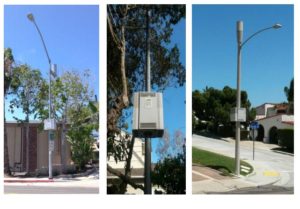Two weeks before the Fourth of July and the council’s minds may have turned to parades, barbecues and fireworks. The council set most issues aside and concentrated on a few pressing ones — how ocean water is tested and where AT&T or Verizon can place small cell devices.
Ocean pollution is a longstanding problem. In the past it received scant attention. That all changed with the millions of gallons of sewage that washed in from the Tijuana River along the shore in Imperial Beach this past winter. The heavy rains closed the local beaches for an unprecedented number of days. People are generally advised to stay out of the ocean for up to 72 hours after pathogens or pollutants have been detected.
A group of surfers and community activists have kept this issue alive, and front and center, for months.
Ahead of the council meeting City Manger Blair King released a memorandum detailing water testing protocols for the City of Coronado and the City and County of San Diego. Daron Case, a local resident who’s championed this issue for many months, expressed his delight that Coronado was doing its own testing; but more was needed he told the council. “What we want now is transparency,” he said. “This is your call to action. Test more frequently and release the results to the public.”
Councilwoman Carrie Downey agreed that more needed to be done. “The organizations that do test, do not coordinate very well. Nobody knows who’s testing and where,” she said. She also noted that the Department of Environmental Health (DEH) was working on a new test that would produce results more quickly and has asked that Coronado beaches be among those areas being tested.

The council also ruminated over the prospect of more of small wireless cell sites appearing in places residents might not want them. A bill by State Senator Ben Hueso, SB649, would give the State of California authority to approve small cell sites in communities. Currently local jurisdictions determine where the sites are placed and are compensated.
The city is not opposed to small cell sites, they are necessary for better wireless communication. The more cell sites, the greater the bandwidth. The issue is where to place the sites — along Orange Avenue where everyone would see them or in an alley where few would.
“It could very well pass,” said Downey. “We would lose the discretionary ability to accommodate [the telecommunication companies] in a way that benefits the community. She noted that several years ago AT&T wanted to place a tower on RiteAid that would have been an eye sore, because they had jurisdiction the city was able to work with the company to make the tower less noticeable.
“This is the kind of dynamics at city hall that people don’t see,“ King said. “Five years down the road, they’ll see the results and asked why it happened.”
The council also unanimously approved a 200-foot yellow loading zone in front of the Commodore at 333 Orange Ave and agreed to consider extending the red zone at a future council meeting. This would increase visibility for drivers exiting onto Orange Avenue. By extending the red zone there will be one less parking space on the street.
For this reason the city council rejected a request to extend the red zone in 2014. Mayor Richard Bailey argued that the visibility coming out of the Commodore garage was so limited that extending the red zone was warranted.




